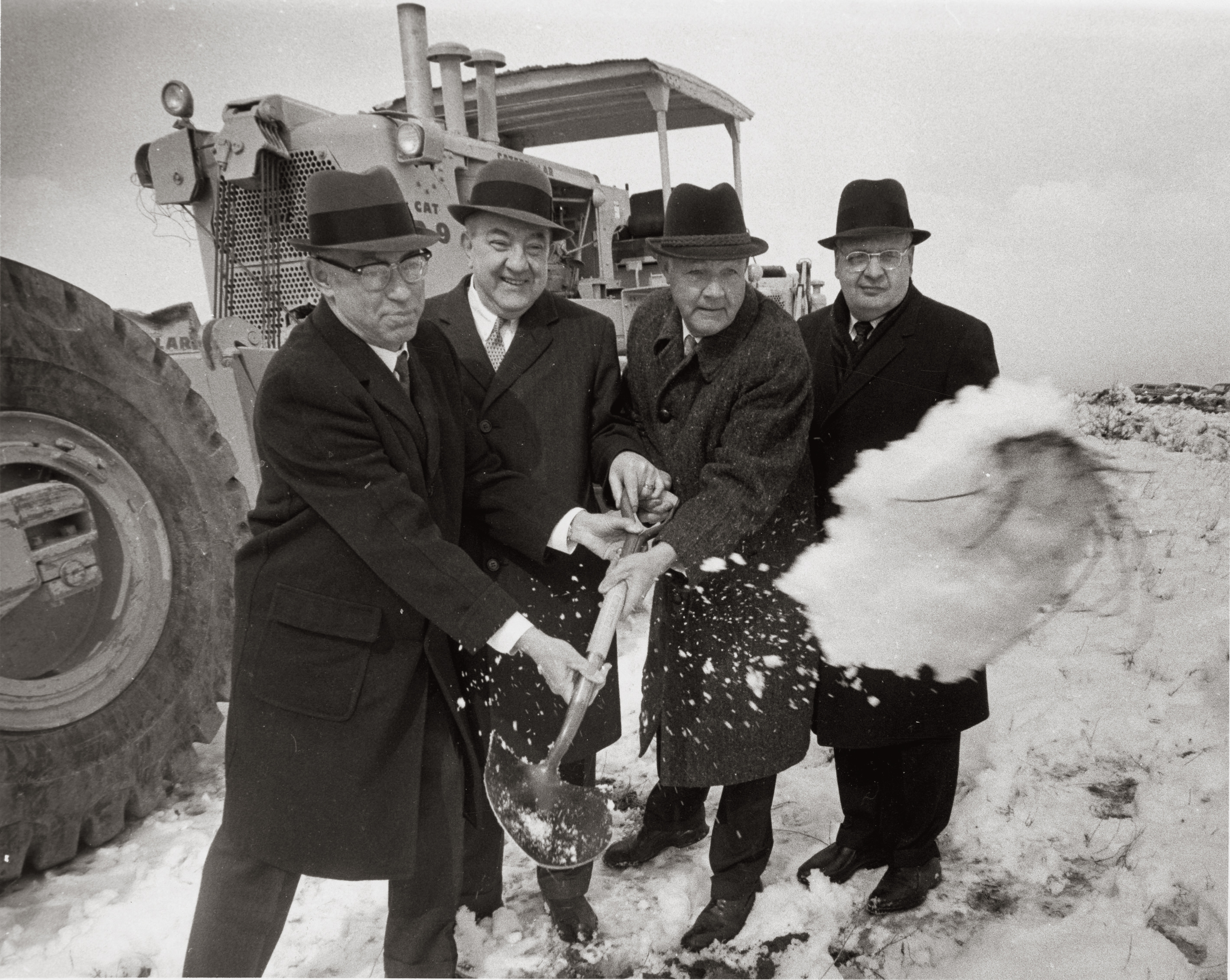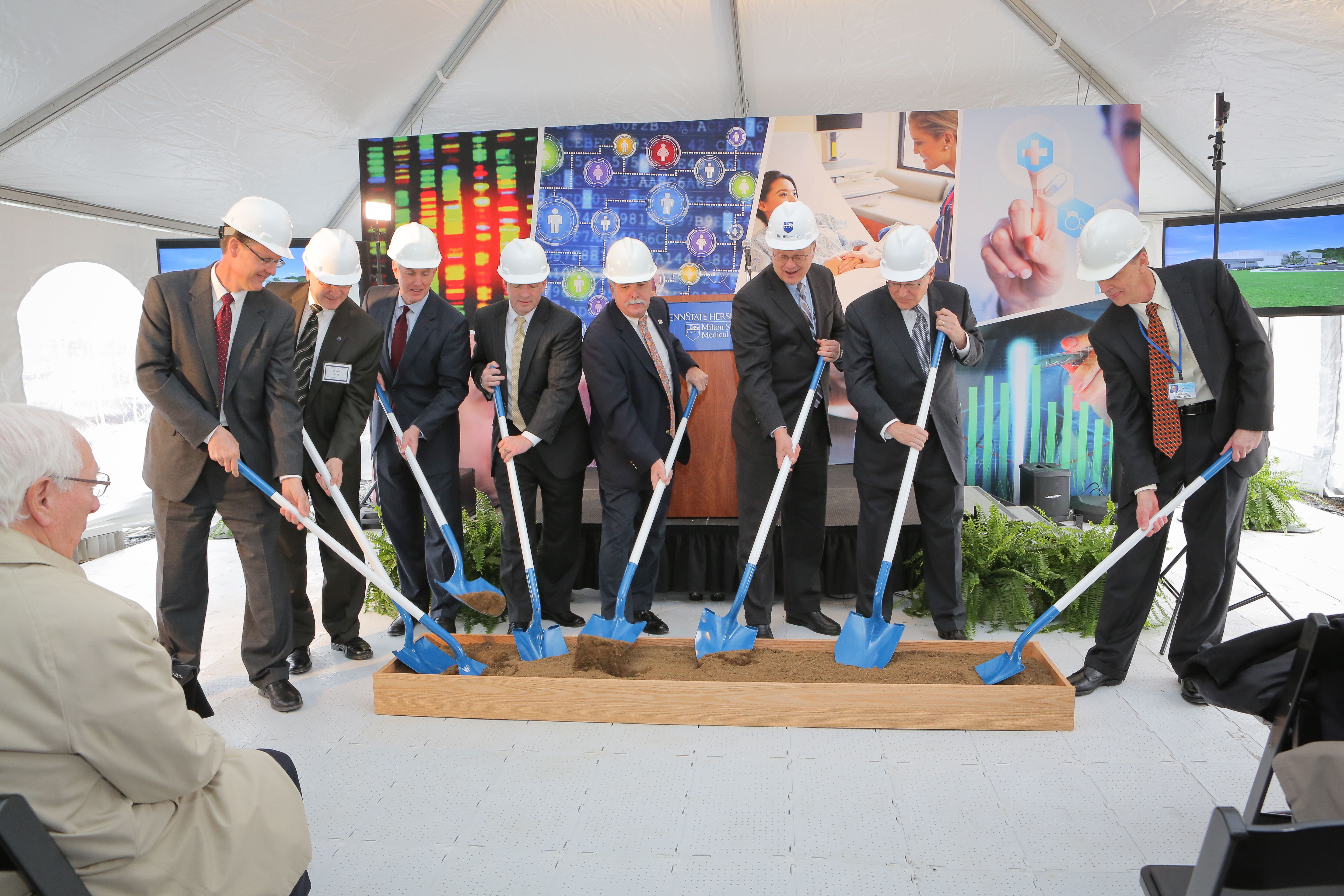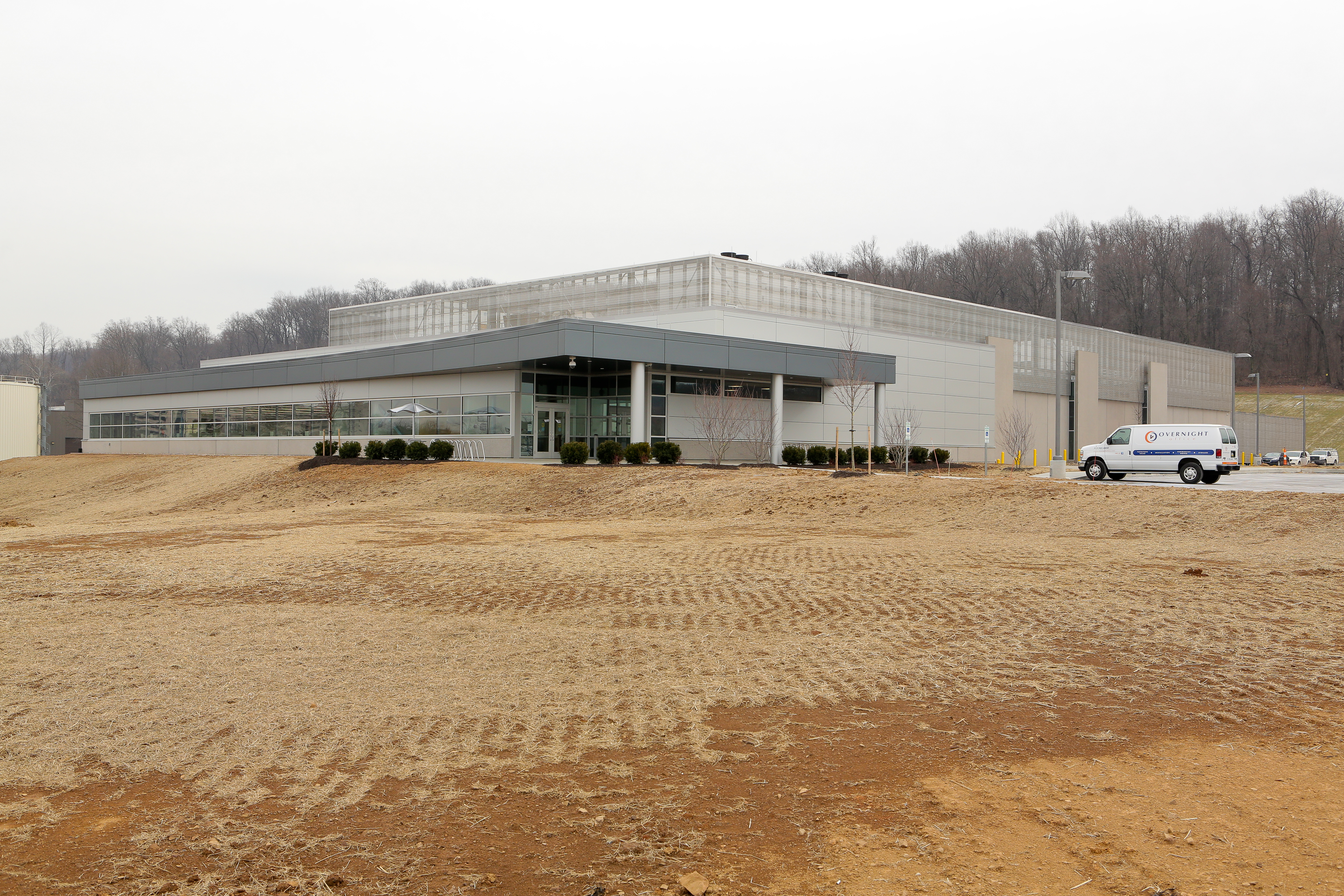New technology center builds on promises of College groundbreaking 50 years ago

Eric Walker, president of The Pennsylvania State University; Sam Hinkle, Hershey Trust Company; Captain R.W. Roland, Penn State Board of Trustees president; and Arthur Whiteman, Hershey Trust Company, break snow-covered ground to signal the start of the construction of the Penn State Hershey campus on Feb. 26, 1966.
We’re all walking around with at least six billion pieces of information in our personal genome that, as the field of personalized medicine grows, can provide valuable clues to future health. When paired with clinical data from the electronic medical record (EMR), physicians will be able to provide individualized, precision medical care. The potential implications for improved health and efficiency of health care delivery are huge. So too are the technology needs to support that future.
In the not too distant future, every patient seen by providers at Penn State Milton S. Hershey Center will be offered genome analysis, something the organization’s founders could have never conceived of 50 years ago when the first shovel was plunged into the farm fields on Feb. 26, 1966, of what would become Penn State Hershey Medical Center and Penn State College of Medicine. The groundbreaking was a short three years after a $50 million gift offer from the M.S. Hershey Foundation to Penn State to establish a medical school and teaching hospital in Hershey.
“This is the most exciting time to be in medicine in terms of research capabilities and outcome for patients,” said Dr. James Broach, director of Penn State Hershey Institute for Personalized Medicine. “The first genome sequence was generated in 2003 and that took 10 years and $3 billion. Now, in one day for about $1,000, we can do the same thing.”
Fifty years ago, many Americans were watching “Dr. Kildare” and later “Marcus Welby, M.D” on TV. For them, personalized medicine meant a listening ear and a thorough examination from their kindly family doctor.
[youtube https://www.youtube.com/watch?v=TVYbfFV_WcM?list=PLBA97236E6DEE36B2&w=560&h=315]
“That personal approach remains a keystone of healthcare,” said Dr. Chris DeFlitch, chief medical information officer and founder of the Center for Integrated Healthcare Delivery Systems at Penn State. “Medicine is about people taking care of people. The advent of computerization, EMRs and medical knowledge has skyrocketed the data required to do just that.”
With these tools, however, diagnoses and treatments can be more precise.
“We’ve always been doing personalized medicine in the sense that the physician has looked at the patient and measured what was possible, but now we have many more measurements that are sensitive to diseases and can more precisely tailor treatment to that individual,” Broach said.
[youtube https://www.youtube.com/watch?v=hIE_Vz-NPxw&w=560&h=315]
Added DeFlitch, “It’s the power of big data and partnership between genomics researchers, clinicians, and integrated delivery systems that benefits patients.”
A newborn baby, for example, who ends up in the Neonatal Intensive Care Unit with a medical problem can benefit from genome sequencing and analysis done in its first day of life.
“From a small sample of blood, we can break up DNA into a lot of small fragments, sequence those randomly and analyze them,” Broach said. “Ninety-nine percent of the six billion pieces of information in a genome are identical from person to person, but about 30 million are differences that we can compare to large data sets that tell us this variation is associated with a specific disease.”
To do all this, Penn State Hershey needed the technology for determining the sequence of a person’s genome and the computational power to acquire, store and interpret the data. It also needs the computing power to handle the more than 330 million transactions made in the hospital’s EMR system every month.

Groundbreaking for the University Technology Center was held on Jan. 14, 2015.
With as much foresight toward the future as the Medical Center and College of Medicine’s founders had back in 1966, Penn State Hershey officials broke ground nearly 50 years later for the new University Technology Center, located near Life Lion Drive.
“Fifty years ago, there was no computing of any magnitude, but now almost everything we do in medicine and medical research requires computing power and data storage,” said Rodney Dykehouse, chief information officer for the Milton S. Hershey Medical Center. “Furthermore, things that used to be manual and stand alone are now highly computerized and require networking.”
Think of all of the devices nurses and physicians use to care for patients. Historically, nurses mixed and hung an IV medication, and manually adjusted how fast the patient should get the medication. Now, all of that ordering, mixing, drug interaction checking and preparation goes through many EMR checks, and when delivered to the patient, even the IV pumps are programmed and driven off information from a patient’s electronic medical record. These IV pumps, ventilators, blood pressure cuffs and any number of other devices are communicating wirelessly within the electronic network and the patient’s EMR.
[youtube https://www.youtube.com/watch?v=neHRq9ddOs8&w=560&h=315]
“Secure device connectivity for patient care in the hospital and even at home, is another emerging technology opportunity to provide high quality care at a lower cost,” said DeFlitch.
“This facilitates accuracy, patient safety and quality of care,” Dykehouse said. “Advances in medicine require greater control of medication and treatment protocols. We have reduced the variation in care that results from manual care of these things.”
In turn, costs are reduced because of better patient outcomes and more efficient ways of doing things, he said.
Previously, for example, a dermatologist who took a picture of a patient’s skin problem or any doctor ordering an MRI or CT scan would have to rely on the images being sorted and stored for future use. Now, the images are instantly embedded in the patient’s electronic medical record.
“These images are driving a lot of our storage demands, but now they are immediately available for the clinicians when they need them, and we’re providing efficiency for storage,” Dykehouse said.
The first nine of about 25 employees have moved into the 46,000-square-foot, $54-million data center and are preparing the building and devices toward full operation expected by late spring or early summer, according to Dykehouse.
“Our old data center was out of date, at capacity and a barrier to the business we needed to be doing in terms of processing and storage,” he said. “The new building has three times the capacity of the existing data center with space to triple the capacity, and we’ve designed the lot to take two more identical buildings. Now, we can meet any of the demands of our organization and the growing health system.”

Penn State Hershey runs about 500 different applications to support the college, medical center and health system, and stores much of data for the research and clinical enterprises. The University Technology Center also serves as a backup for patient electronic medical records that are hosted elsewhere but supported here.
Turns out the 21st century need for data storage will also link the Hershey campus with University Park in ways the founders could never have predicted 50 years ago when they considered the 90 miles that separate the two core institutions.

The University Technology Center is near completion.
Today, the University Technology Center in Hershey and a like data center in State College will serve as each other’s disaster recovery backup location in the event of a major outage or catastrophe where information is lost, Dykehouse said.
“This ensures business continuity between the Hershey campus and main campus,” he said. “In any event, we must be able to continue to function and we will.”
With an eye toward an environmentally-friendly future, the new data center is also Leadership in Energy and Environmental Design (LEED)-certified, which will make it more efficient to run and save on energy costs, Dykehouse said.
The investment in the University Technology Center is really an investment in the next 50 years of the community’s health as the information it houses facilitates this new world of personalized and precision medicine, with technological capabilities that in some ways eclipse even the best bedside manner Marcus Welby had to offer.
By Carolyn Kimmel
If you're having trouble accessing this content, or would like it in another format, please email Penn State Health Marketing & Communications.
